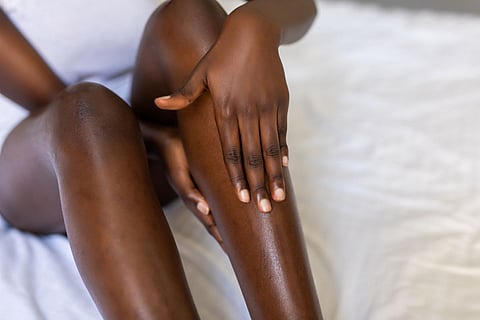FRIDAY, Aug. 16, 2024 (HealthDay News) -- Patients with skin of color may experience more adverse events from sclerotherapy, according to a study published online July 26 in the Journal of the American Academy of Dermatology.
Michelle Lazar, from the Boston University School of Medicine, and colleagues characterized the incidence of common adverse events following sclerotherapy in various Fitzpatrick Skin Types. The analysis included data from 134 patient visits for sclerotherapy (treated with 0.5 to 1 percent Polidocanol).
The researchers identified 12 adverse events across all visits, resulting in an 8.96 percent adverse event rate. Adverse events included blistering (six events), postinflammatory hyperpigmentation (PIH; five events), induration (three events), superficial thrombophlebitis (one event), and ulcer (one event). There was no evidence of acute deep venous thrombosis in Doppler ultrasound in the patient with superficial thrombophlebitis. Overall, the majority of the adverse events occurred in Fitzpatrick Skin Types of III or higher, while all PIH adverse events occurred in patients with Fitzpatrick Skin Types of IV or higher.
"Our data highlights that sclerotherapy is safe in populations with skin of color, though they do experience PIH at a higher rate as compared to those with lighter skin tones," the authors write.
Abstract/Full Text (subscription or payment may be required)


